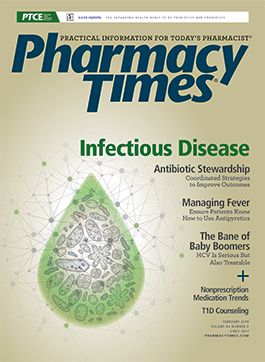The Sickest Time of the Year: How Brown Bagging Can Bring Clarity
Community-acquired pneumonia is a common and potentially serious illness, particularly in elderly patients and those with significant comorbidities. Prevention and early identification can have a positive impact on infected individuals, health care economics, and the community.
Community-acquired pneumonia is a common and potentially serious illness, particularly in elderly patients and those with significant comorbidities. Prevention and early identification can have a positive impact on infected individuals, health care economics, and the community. One option to help patients: brown bag consults, which can be essential educational and safety tools to measure and ensure quality care. By asking patients to bring in all their current medications, including OTC, mail-order, specialty, and herbal products, pharmacists can ensure appropriate and up-to-date care.
Pharmacists are key providers in the continuum of care, consistently helping to identify potential problems and concerns that may require follow-up with prescribers or a medication therapy session. It is essential that a pharmacist’s workflow allow for brown bag consults, which can do the following:
- Develop the patient—pharmacist relationship to help create better individualized service, forge patient loyalty and trust, and prevent medical errors
- Provide insight into a patient’s lifestyle and quality of care
- Show how well patients understand their conditions and medications
BC is a 64-year-old widowed male who is a relatively new customer to the pharmacy. He retired from a teaching position about a year ago and is learning to self-manage his health and home. You know from past conversations that BC spends a significant amount of time reading and volunteering at the local library now that his wife has died. He stops by the pharmacy to pick up his late refill prescriptions for atorvastatin and metformin. You counsel BC on potential misuse and explain the concept of a brown bag session. While counseling him, you notice that he seems confused and is coughing. You ask BC whether everything is OK, and he hesitates before responding. He explains that he has had a fever and a headache since last night and this morning started feeling short of breath. BC is a former smoker but says that he has not touched a cigarette in years. But the cold weather makes it very hard for him to breathe. You tell BC that because of his chronic disease states, you think he would be an excellent candidate to participate in a medication review. However, more immediately, you suggest that he visit the local urgent-care clinic to have his acute symptoms evaluated. BC is interested in the offered medication review and takes your advice to immediately stop by the clinic.
He admits that he cannot afford a costly hospitalization, as he is still paying many hospital bills from his late wife’s illness. BC is very grateful for your concern and help.
He stops by the pharmacy later that afternoon to tell you that he received a diagnosis of pneumonia. The provider who evaluated BC prescribed an antibiotic and an inhaler. BC hands your technician the scripts to fill, along with a bag of all the medications he is taking. BC also asks for your recommendation on OTC therapies to help treat his symptoms. To prepare for your counseling session, you pull up his pharmacy profile to compare it with what is in his brown bag:
- Alprazolam, 0.5 mg, as needed twice daily
- Atorvastatin, 20 mg, once every evening u Azithromycin, 500 mg at once, then 250 mg once daily for 4 days
- Enalapril, 20 mg, once daily u Furosemide, 40 mg, once every morning
- Metformin, 500 mg, twice daily
- Paroxetine, 20 mg, once daily
BC empties his brown bag, and you notice these additional medications:
- Expired albuterol inhaler, with no label
- OTC aspirin, 325 mg, once daily
- OTC diphenhydramine, 25 mg u OTC ibuprofen, 200 mg
- Adult multivitamin, once daily
- OTC phenylephrine, 10 mg
As you review the medications for accuracy, you also double-check the dosing and instructions on BC’s new medications to treat his pneumonia. He confides that he cannot remember the last time he had laboratory work performed to check his cholesterol or glucose levels. BC never self-checks his blood pressure. He promises to be proactive in obtaining blood work when he returns to the clinic later in the week to follow up on his pneumonia treatment. You offer to share BC’s pneumonia diagnosis with his regular care team so that they, too, can follow up on some of his treatment and medications. He is taking many OTC medications that can affect his health, and you want to ensure that all his providers are aware of his medication list. What else can you do to temporarily help BC, and what long-term goals do you have for him?
Editor’s note: Case is not based on an actual patient.
Jill Drury, PharmD, is a clinical pharmacy specialist in Chicago, Illinois, and Milwaukee, Wisconsin. She earned her doctor of pharmacy degree from Midwestern University College of Pharmacy. Her blog, Compounding in the Kitchen, an innovative amalgam of pharmacy and cooking, appears on PharmacyTimes.com/ blogs/compounding-in-the-kitchen.

